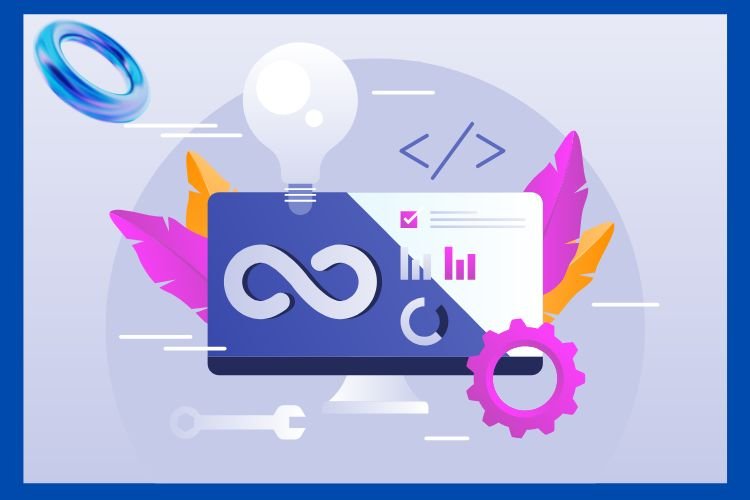
Designing effective courses within a Learning Management System LMS is essential for maximizing student engagement, retention, and success. An LMS provides a platform for delivering educational content, facilitating communication, and assessing student performance. To harness the full potential of an LMS, educators must follow best practices in course design. This comprehensive guide explores these best practices, ensuring educators can create engaging and effective online courses.
Understanding the Role of an LMS
What is an LMS?
A Learning Management System (LMS) is a software application that enables the administration, documentation, tracking, reporting, and delivery of educational courses or training programs. LMS platforms, such as Canvas, Moodle, and Blackboard, offer tools for course creation, student management, and performance assessment. Understanding how an LMS functions is crucial for effective course design.
Importance of Course Design in an LMS
Effective course design is vital for several reasons:
- Enhances Learning Experience: A well-structured course in an LMS promotes a positive learning experience, helping students navigate content easily.
- Facilitates Engagement: Thoughtfully designed courses encourage student interaction and participation, which are critical for online learning.
- Improves Retention: Engaging and accessible courses can lead to higher retention rates, as students are more likely to complete courses that are well-organized and relevant.
- Supports Assessment: An LMS allows for various assessment methods, making it easier to evaluate student performance and provide timely feedback.
Best Practices for Course Design in an LMS
1. Define Clear Learning Objectives
Defining clear learning objectives is the foundation of effective course design in an LMS. These objectives should articulate what students are expected to learn and achieve by the end of the course.
How to Define Learning Objectives
- Use the SMART Criteria: Learning objectives should be Specific, Measurable, Achievable, Relevant, and Time-bound. For example, instead of saying “understand basic math,” a more precise objective would be “solve linear equations with 80% accuracy by the end of the course.”
- Align with Assessments: Ensure that learning objectives align with the assessments and activities included in the LMS. This alignment helps students understand the relevance of their learning.
2. Create an Organized Course Structure
An organized course structure enhances usability and navigation within the LMS. A clear layout helps students find resources and understand course progression.
Tips for Organization
- Use Modules or Units: Break the course into modules or units that cover specific topics or skills. Each module should have a consistent structure, including an overview, learning objectives, content, activities, and assessments.
- Implement a Logical Flow: Arrange the content in a logical sequence. Start with foundational concepts before progressing to more complex topics.
- Include a Course Syllabus: Provide a detailed syllabus at the beginning of the course. This document should outline course objectives, expectations, assessment methods, and a schedule of topics.
3. Incorporate Diverse Learning Materials
To cater to different learning styles and preferences, it’s essential to include a variety of learning materials in the LMS.
Types of Learning Materials
- Text-Based Content: Use readings, articles, and textbooks to deliver foundational knowledge. Ensure that the text is well-organized and easy to read.
- Multimedia Resources: Incorporate videos, podcasts, and infographics to engage visual and auditory learners. Multimedia can also illustrate complex concepts more effectively.
- Interactive Elements: Utilize quizzes, simulations, and interactive activities that allow students to apply what they have learned. These elements can enhance engagement and retention.
4. Encourage Student Interaction and Collaboration
Interaction among students and between students and instructors is critical for a vibrant learning environment. An LMS can facilitate various forms of communication and collaboration.
Strategies for Encouraging Interaction
- Discussion Boards: Create forums where students can engage in discussions related to course content. Encourage students to share their perspectives and respond to each other’s posts.
- Group Projects: Assign collaborative projects that require students to work together, fostering teamwork and communication skills. Use the LMS tools to facilitate group discussions and file sharing.
- Live Sessions: Incorporate synchronous learning opportunities, such as webinars or live Q&A sessions. This real-time interaction can enhance community building within the course.
5. Provide Regular Feedback and Assessment
Regular feedback is essential for student growth and motivation. It helps students understand their strengths and areas for improvement.
Best Practices for Feedback
- Timely Feedback: Provide feedback on assignments and assessments promptly. This allows students to reflect on their performance and make necessary adjustments.
- Use Rubrics: Create clear rubrics for assignments that outline expectations and grading criteria. This transparency helps students understand how their work will be evaluated.
- Incorporate Self-Assessment: Encourage students to assess their own work and reflect on their learning. Self-assessment can promote metacognitive skills and personal accountability.
6. Leverage LMS Analytics
Modern LMS platforms offer powerful analytics tools that provide insights into student engagement and performance. Educators can use this data to inform course design and improve student outcomes.
Utilizing Analytics Effectively
- Monitor Student Engagement: Track metrics such as login frequency, time spent on tasks, and participation in discussions. This data can help identify students who may be at risk of disengagement.
- Adjust Content Based on Data: Use analytics to evaluate which materials or activities are most effective. If certain resources are underutilized, consider revising or replacing them.
- Identify Trends: Analyze performance data to identify trends in student learning. This information can guide adjustments to course content or teaching strategies.
7. Ensure Accessibility and Inclusivity
Creating an accessible course in an LMS ensures that all students, regardless of their abilities or backgrounds, can participate fully in the learning experience.
Best Practices for Accessibility
- Use Alt Text for Images: Provide descriptive alt text for images and multimedia content so that screen readers can convey information to visually impaired students.
- Offer Multiple Formats: Ensure that course materials are available in various formats (e.g., text, audio, video) to accommodate different learning preferences.
- Design for Diverse Learners: Consider the needs of all learners, including those with disabilities, when designing course activities and assessments. Use universal design principles to create inclusive content.
8. Build a Community of Learners
A sense of community is essential for online learning. An LMS can help cultivate connections among students, enhancing their engagement and motivation.
Strategies for Community Building
- Icebreaker Activities: Start the course with icebreaker activities that encourage students to introduce themselves and share their interests. This can create a welcoming environment.
- Peer Mentoring: Implement peer mentoring programs where experienced students support newcomers. This fosters collaboration and community.
- Celebrate Achievements: Recognize and celebrate student achievements, whether through announcements in the LMS or virtual awards. This fosters a positive learning atmosphere.
9. Continuously Update and Improve Course Content
The field of education is constantly evolving, and so should course content. Regularly updating materials ensures that students receive current and relevant information.
Strategies for Continuous Improvement
- Solicit Student Feedback: Use surveys and feedback forms to gather input from students about the course content and structure. This feedback is invaluable for making improvements.
- Stay Informed on Trends: Keep up with developments in your subject area and incorporate new findings or methodologies into your course design.
- Review and Revise Regularly: Schedule regular reviews of course content and structure. Make adjustments based on feedback, analytics, and current best practices.
10. Provide Clear Navigation and Support
Clear navigation within an LMS is crucial for ensuring that students can find the resources they need without frustration.
Best Practices for Navigation
- Consistent Layout: Use a consistent layout for all course modules and materials. This uniformity helps students know what to expect and where to find information.
- Provide Orientation: Offer an orientation session or resources to familiarize students with the LMS interface and features. This can reduce confusion and enhance their learning experience.
- Accessible Support Resources: Ensure that students have easy access to technical support and additional resources. This could include FAQs, help guides, or a dedicated support forum within the LMS.
Conclusion
Designing effective courses within a Learning Management System (LMS) requires careful planning and attention to best practices. By defining clear learning objectives, creating an organized course structure, incorporating diverse materials, fostering interaction, and leveraging analytics, educators can create engaging and impactful online courses.
As technology continues to evolve, so too should our approaches to course design. Continuous improvement, accessibility, and community building are essential for creating a positive learning environment that fosters student success. By following these best practices, educators can maximize the potential of their LMS and enhance the educational experience for all students.
Ultimately, the goal is to create a dynamic and inclusive learning environment that prepares students for the challenges and opportunities of the future, all while making the most of the powerful tools that an LMS provides.






